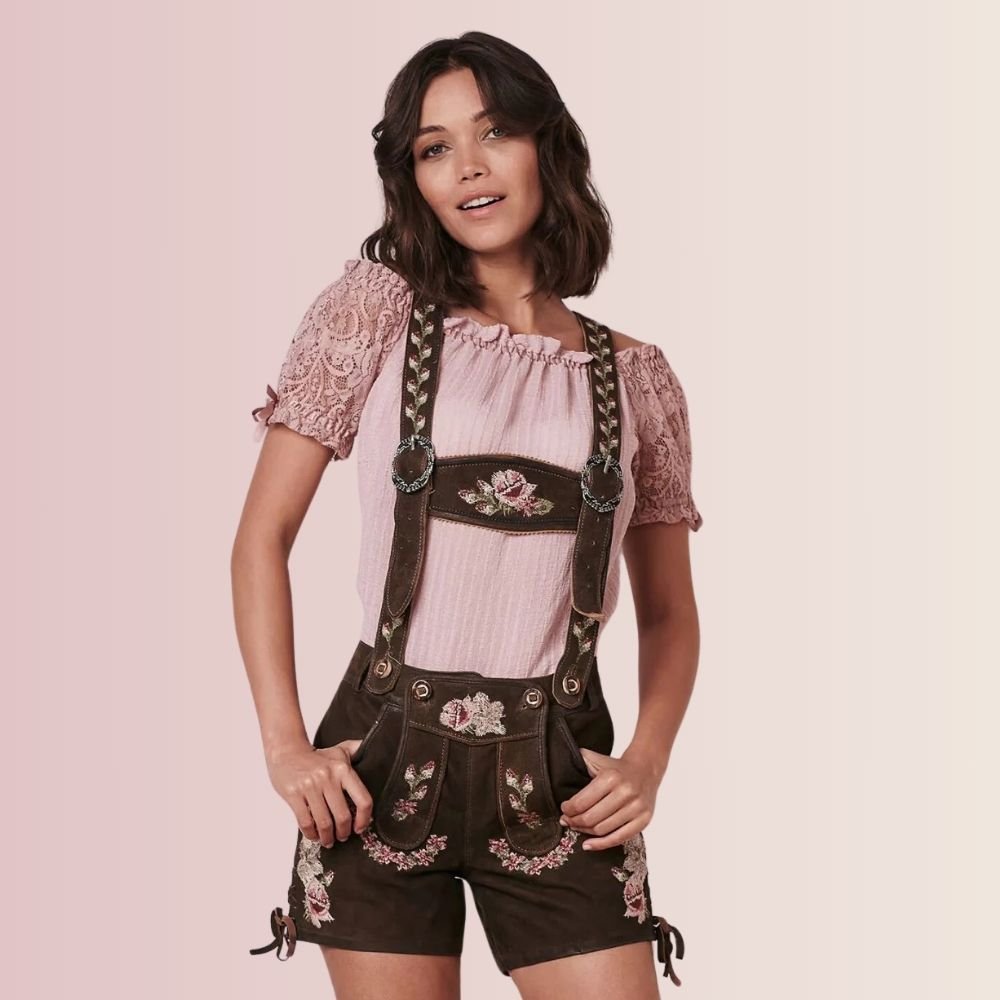Traditional German Wear: A Journey Through Culture and Craftsmanship
When you imagine traditional German wear, visions of lively Oktoberfest celebrations, Alpine villages, and intricate folk costumes likely come to mind. From the iconic Dirndl to rugged Lederhosen, these garments are more than just clothing—they’re emblems of Germany’s rich heritage, craftsmanship, and regional pride.
In this guide, we’ll delve into the history, styles, and modern relevance of traditional German wear, offering insights for enthusiasts, collectors, and anyone eager to embrace timeless cultural fashion.
What Is Traditional German Wear?
German wear, or Tracht, refers to historical outfits worn across Germany’s diverse regions. Rooted in practicality, these garments were designed for rural life but evolved into symbols of identity and celebration. Key elements include:
- Dirndl: A women’s dress with a fitted bodice, blouse, full skirt, and apron.
- Lederhosen: Men’s leather breeches, often paired with suspenders and rustic shirts.
- Trachtenjacke: Wool jackets adorned with embroidery or horn buttons.
- Accessories: Hats like the Bollenhut, sturdy Haferlschuhe shoes, and woven stockings.
Today, traditional German wear is celebrated at festivals, weddings, and cultural events, blending heritage with contemporary fashion.
The History of Traditional German Wear
Origins: Function Meets Tradition (16th–18th Century)
- Farmers and laborers needed durable clothing, leading to leather Lederhosen and linen Dirndls.
- Regional styles emerged based on climate and local materials (e.g., wool in Alpine areas, linen in the south).
Romantic Revival (19th Century)
- During Germany’s unification, Tracht became a symbol of cultural pride.
- Royals like King Ludwig II of Bavaria popularized folk attire to unify national identity.
Global Fame (20th Century–Present)
- Oktoberfest (founded in 1810) turned traditional German wear into a global phenomenon.
- Modern designers now fuse Tracht with urban trends, making it relevant for today’s fashionistas.
Key Pieces of Traditional German Wear
1. The Dirndl: A Women’s Timeless Classic
The Dirndl is the cornerstone of women’s German wear. Originally a servant’s uniform, it became a fashion statement by the 19th century.
- Components:
- Bodice: Tight-fitting, often embroidered with flowers or lace.
- Blouse: White with puff sleeves.
- Skirt: Full and knee-length for ease of movement.
- Apron: Colorful and tied to signal marital status (left=single, right=married).
- Modern Twists: Designers now offer Dirndl dresses in shorter lengths, metallic fabrics, and minimalist designs.
2. Lederhosen: Rugged Style for Men
Lederhosen (meaning “leather trousers”) are synonymous with Bavarian culture.
- Features:
- Material: Durable deerskin or goat leather.
- Suspenders: Embroidered with floral or Alpine motifs.
- Latze: Decorative front flap with ornate buttons.
- Styling: Pair with checkered shirts, Haferlschuhe shoes, and wool socks for an authentic look.
3. Accessories: Elevating the Ensemble
- Hats:
- Bollenhut: A Black Forest hat with red pom-poms (unmarried women) or black (married).
- Tirolerhut: Felt hats with feathers for Alpine regions.
- Footwear:
- Haferlschuhe: Chunky-soled shoes for durability.
- Loferl: Traditional leather boots.
- Jewelry: Silver brooches and Charivari chains for men.
Regional Variations in Traditional German Wear
Germany’s 16 federal states boast unique Tracht styles:
Bavaria: The Heart of Oktoberfest Fashion
- Vibrant colors, intricate embroidery, and feathered hats.
- Dirndls often feature puffed sleeves and sky-blue aprons.
Black Forest: Bold and Iconic
- Bollenhut hats and dark wool dresses with red accents.
- Silver jewelry and lace collars for women.
Alpine Regions: Warmth and Function
- Thick wool jackets, knitted socks, and felt hats.
- Heavy embroidery inspired by mountain flora.
Northern Germany: Understated Elegance
- Muted tones and simple designs reflecting coastal climates.
- Long wool skirts and tailored coats for men.
Traditional German Wear in Modern Fashion
Contemporary Reinventions
- Street Style:
- Dirndl skirts paired with crop tops and sneakers.
- Lederhosen shorts for casual summer wear.
- High Fashion:
- Brands like Hugo Boss and Dolce & Gabbana incorporate Tracht into runway collections.
- Dirndl Rebellion offers edgy, gender-neutral designs.
Sustainability in Tracht
- Eco-conscious brands use organic cotton, recycled leather, and natural dyes.
- Handmade craftsmanship supports local artisans and reduces waste.
Why Invest in Authentic Traditional German Wear?
- Quality: Hand-stitched embroidery and premium materials ensure longevity.
- Cultural Connection: Celebrate heritage at festivals, weddings, or family gatherings.
- Versatility: Mix and match pieces for both traditional and modern outfits.
How to Style Traditional German Wear Today
For Oktoberfest or Folk Festivals
- Women: Opt for a classic Dirndl with braided hair, ankle boots, and a Bollenhut.
- Men: Pair Lederhosen with a checkered shirt, suspenders, and Haferlschuhe.
For Everyday Chic
- Layer a Trachtenjacke (embroidered jacket) over jeans and a turtleneck.
- Style a Dirndl skirt with a fitted sweater and ankle boots.
For Weddings or Formal Events
- Choose a white Dirndl with gold-thread embroidery.
- Men can wear tailored Lederhosen in navy or black paired with a crisp white shirt.
Where to Buy Authentic Traditional German Wear
1. Local German Boutiques
- Visit Munich or Nuremberg for handcrafted pieces from family-run shops.
2. Trusted Online Retailers
- Bavarian Outfitters: Premium Lederhosen and Dirndls with global shipping.
- Dirndl.com: Customizable designs for all body types.
- Etsy: Handmade Tracht from German artisans.
3. Festivals and Markets
- Oktoberfest pop-up shops offer affordable options.
- Christmas markets sell seasonal styles like woolen shawls and embroidered gloves.
Caring for Your Traditional German Wear
- Leather Care: Condition Lederhosen annually to prevent cracking. Store in a cool, dry place.
- Dirndl Maintenance: Hand-wash bodices and aprons; air-dry skirts to preserve fabric.
- Storage: Use breathable garment bags to protect embroidery from dust and moisture.
Conclusion: Embrace Heritage with Traditional German Wear
Traditional German wear is more than attire—it’s a celebration of history, artistry, and community. Whether you’re dancing at Oktoberfest, honoring ancestry, or adding a statement piece to your wardrobe, Dirndls and Lederhosen offer timeless appeal.
Explore our curated collection of authentic German wear and discover garments that blend centuries-old tradition with modern elegance. Prost to style, culture, and craftsmanship!








Reviews
There are no reviews yet.